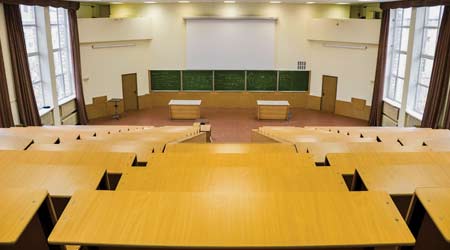 By understanding a facility’s unique needs when planning LED lighting upgrades, managers can ensure they focus on critical areas first.
By understanding a facility’s unique needs when planning LED lighting upgrades, managers can ensure they focus on critical areas first. LEDs: Integrating Upgrades
Successful lighting upgrades incorporating LEDs require a strategic approach and tough questions for manufacturers
For general indoor applications of LEDs, managers can choose from among six approaches to integrate them a linear fluorescent lighting system: UL type A, B, A/B, and C retrofits; retrofit kits; and new fixtures.
Type A solutions involve a tube with an integrated driver designed to function with an existing linear fluorescent electronic ballast. Type B systems deliver line voltage directly to the lamp and eliminate the need for a ballast. Type C systems separate the LED lamp and driver, offering increased efficiency. Some manufacturers offer Type A/B — a hybrid between A and B — with a driver that can operate with an existing electronic ballast or with direct voltage.
We typically implement Type A or C retrofit solutions in projects, depending on client goals, the specific application, hours of operation and the state of the building’s lighting components.
With Type A retrofits, it is critical to partner closely with the manufacturer and carefully evaluate the electrical compatibility of the new lamp and existing ballast. Without this testing, a lamp can appear to work initially but quickly develop flickering or fail altogether. Type C retrofits simplify this question of component compatibility but come at a somewhat higher total cost.
The four UL upgrade paths — types A, B, A/B, and C — essentially keep the general configuration of the original system and fixture intact. It is also possible to eliminate the entire lamp/ballast configuration all together and move to a specially designed LED retrofit kit. These kits are available for a variety of fixture configurations, including 2x2 troffers, 2x4 troffers, down lights and many other applications.
The benefit of an LED kit is that the fixture looks and performs as if it is new. In most cases, these kits come with integrated sensors and networking capability. Another useful benefit of LED retrofit kits is their ability to set the maximum fixture light output. In many cases, it is possible to set this maximum dimming range set to 70-80 percent of the maximum fixture output. In this case, this spare capacity can serve to counteract lumen depreciation.
Lumen depreciation is a reality for every light source. With all the discussion of LEDs and longevity, one might think they last forever. It is critical to remember that all light sources degrade, and LEDs can survive beyond their useful light level. The lighting industry generally recognizes 70 percent of initial output as the end of useful life. Based on this measure, managers will see that manufacturers rate the hours of life offered by their products with an L70 or L80 rating. L70 corresponds to the number of hours at which the fixture will produce 70 percent of its initial lumens. Similarly, L80 is the hours of use at which the fixture is rated to produce 80 percent of its useful output.
The rated life of lamps varies for interior versus exterior applications. For interior applications, the L70 rating for lamps typically falls in the range of 50,000-100,000 hours. Manufacturers of exterior LED fixtures for parking lots applications offer fixtures with a L70 rating of 260,000 hours.
Related Topics:














